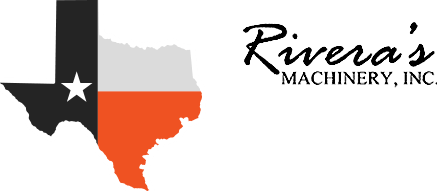Tips For Buying A Used Combine
 One of the best investments you can make for your farm is to get a combine. With one of these behemoths taking care of harvesting, you can focus on yields rather than spending time toiling away on your fields.
One of the best investments you can make for your farm is to get a combine. With one of these behemoths taking care of harvesting, you can focus on yields rather than spending time toiling away on your fields.
Because of their dependable nature, farmers take very good care of these machines, which means that you’ll find many worthy models when you look at used combines. Whether you’re buying new or used, you’ll want to step into the process with enough knowledge to make a sound decision.
At Rivera’s Machinery, Inc. we know some buyers get nervous about buying pre-owned equipment, especially when it’s a complicated machine like a combine. With a little bit of diligence, you can get a machine that’ll work for years and give good ROI. For additional help or to check out some quality used combines for sale, visit us at our location in Donna, Texas.
Right Size
To decide the size of the combine, consider the size of your operation. The higher level of operation in a big machine is tempting but if you don’t have the acreage that requires a big combine, it’s wasted investment. You’ll also need resources and infrastructure for the grain you harvest. A smaller combine that produces a steady load will be a better option than a big machine waiting in the field for pickup. Instead of eyeing the biggest and most feature-laden combines, think of what you actually need the machine for. Remember that a combine’s capacity shouldn’t be more than the gathering head can handle, otherwise you risk wasting or damaging the harvest.
Hours, Not Acres
When you assess the worth of a combine, don’t focus on the number of acres it has harvested. Instead, ask about the total hours on the engine and separator. The total hours show the length of time the engine has run, while the separator hours indicate the actual hours the machine has spent threshing. If the unit is in good condition, high hours aren’t a problem. Low-hours machines that weren’t maintained well can be more problematic. If the engine hours are much higher than the separator, make sure the drivetrain isn’t too worn. Beware equipment with operation hours that way undercut the unit condition and always ask for documentation if available.
Combine Condition
The first thing you have to do when buying a used combine, is a thorough visual inspection. This will reveal any obvious signs of wear and tear or damage. Pay extra attention to the larger belts, chains, and sprockets. If they look too worn, maybe the previous owners overworked the machine or didn’t get it serviced. Ensure the rotor/cylinder bars look good. Chaff collected around bearings, or behind shields, that has been matted down and rained in place is another sign of poor maintenance. If there’s burnt or discolored paint on header covers and underneath the engine hood, it means the engine overheated in the past. Inquire about engine condition to determine if it has been overhauled or worked on recently.
Ease of Operation
You have to get the right combine for your operator, as well as for your farm. Working long hours in an uncomfortable position can end up causing unnecessary discomfort and lingering aches and pains. See if the combine is comfortable enough for the hot harvest conditions. Get in a combine to test it out. Try and get comfy by stretching out, rearranging yourself, adjusting the seats, and testing the controls. Turn the combine on and check for any strange sounds or other clear operational issues.
With the right information and some diligence, you should be able to get an excellent used combine. Another way to avoid ending up with a lemon is to purchase from a reliable dealer, like us at Rivera’s Machinery, Inc., conveniently located near San Benito and Harlingen, TX. To see some quality used combines for sale, visit our dealership in Donna, TX.

